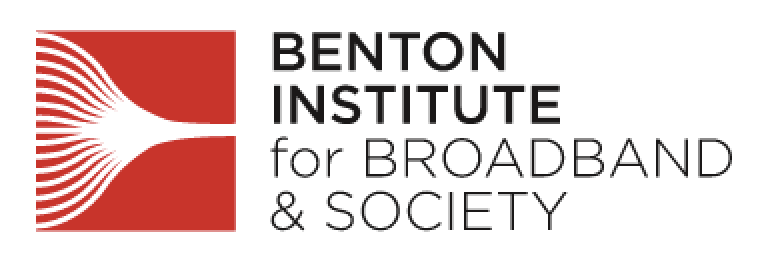Monday, June 2, 2025
Digital Beat
“When completed, the programs detailed in this Final Proposal will provide universal broadband access to all citizens in West Virginia.”—West Virginia Department of Economic Development

On March 13, 2025, West Virginia was poised to achieve one of the greatest broadband successes in America. The state, which currently ranks last in broadband availability, had crafted a plan that would connect every West Virginian home and business to fast, reliable internet service by the end of the decade. Not only would this plan close the state’s digital divide, it would do so using the best internet technology available—fiber-optic networks.
But on March 28, West Virginia’s Governor, Patrick Morrisey (R-WV), withdrew that plan. Announcing a collaboration with the Trump Administration, Gov. Morrisey initiated a process to revise the plan so that it incorporates “a broader range of technology options, including satellite and mobile wireless technologies.” In short, Gov. Morrisey wants West Virginia to rely less on fiber and more on satellite and/or wireless (even though these technologies are generally slower and less reliable).
At the time of Gov. Morrisey's announcement, the state had not publicly released its all-fiber plan. Thus, West Virginians could not know what their governor was walking away from, much less evaluate his new direction.
Today, the Benton Institute for Broadband & Society is publishing West Virginia's plan—the draft Final Proposal—as it was before Gov. Morrisey initiated his revisions. West Virginia's remarkable achievement deserves to be seen, and the public should have an opportunity to compare the state's original plan with Gov. Morrisey's upcoming revised plan. West Virginians can judge for themselves which would have served them better.
The Plan, In Brief
West Virginia was allocated $1.2 billion through the Broadband, Equity, Access, and Deployment (BEAD) Program. Over the past three years, the state worked diligently to create a process that would bring high-quality internet service to every un- and underserved household. This work culminated in West Virginia’s Draft Final Proposal. According to the proposal, West Virginia was set to achieve the following things:
-
Invest $1 billion to deliver affordable fiber-optic broadband to 110,220 West Virginia locations within four years
- $946 million would come from the federal BEAD Program,
- $34.6 million would come from the Appalachian Regional Commission,
- $31.4 million would come from the American Rescue Plan Act,
- $223 million would come in matching contributions from Internet Service Providers (ISPs).
-
Dedicate roughly $150 million in remaining federal BEAD funds toward critical state goals, such as:
- $90 million to deploy mobile wireless infrastructure and improve cellular service.
- $30 million to train West Virginians for good-paying jobs and build the talent needed to support the broadband industry.
- $30 million to expedite the pole attachment process, shortening the time and cost to get broadband to West Virginians.
- $4 million to improve WVNET, the network that supports community anchors and educational institutions across the state.
West Virginia achieved these results—full fiber coverage with money to spare—through a fair, open, and competitive grant process. The process was designed with input from stakeholders across the state, and all technologies—fiber, wireless, and satellite—were invited to compete.
Yet satellite and fixed wireless service providers largely declined to participate. This is likely because satellite and wireless technologies are generally not suitable for West Virginia’s famously mountainous and forested terrain. Per West Virginia’s plan:
“Considering foliage, steep valleys, weather events, and other obstacles interfere with signal transmission for fixed wireless and LEO satellite, such interference not only impacts the immediate availability of these services, but even if signal can be received, speeds experienced by end-users can then widely vary as well. The state has a highly mountainous terrain (with 78.5% of the State covered in forest), and faces a wide range of weather events, such as snow and rain; all of which can significantly degrade speeds utilizing those services.”
Given the openness of state's BEAD program, the levels of participation from various providers, and the state’s challenging terrain, West Virginia could hardly have hoped for a better outcome than the one it achieved.
Redefining Success
In a recent op-ed, Gov. Morrisey wrote:
“[W]e are redefining what success looks like. We’re expanding the definition of service to include not only fiber but also fixed wireless and satellite, particularly in our mountainous and remote regions where traditional infrastructure is impractical or cost-prohibitive.”
However, as his state’s own plan shows, more wireless and satellite technology will hardly constitute “success” for West Virginia. West Virginia already achieved success that exceeds the expectations of the BEAD Program. So West Virginians might ask, 'What's wrong with this plan?'
Read West Virginia's draft Final Proposal for yourself.
Drew Garner is the Director of Policy Engagement at the Benton Institute for Broadband & Society.
The Benton Institute for Broadband & Society is a non-profit organization dedicated to ensuring that all people in the U.S. have access to competitive, High-Performance Broadband regardless of where they live or who they are. We believe communication policy - rooted in the values of access, equity, and diversity - has the power to deliver new opportunities and strengthen communities.
© Benton Institute for Broadband & Society 2025. Redistribution of this email publication - both internally and externally - is encouraged if it includes this copyright statement.
For subscribe/unsubscribe info, please email headlinesATbentonDOTorg

Kevin Taglang Executive Editor, Communications-related Headlines Benton Institute for Broadband & Society 1041 Ridge Rd, Unit 214 Wilmette, IL 60091 847-220-4531
headlines AT benton DOT org




